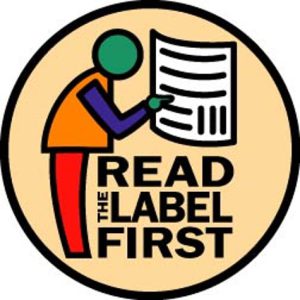 Early in my career as a forester I advised a homeowner to use a certain pesticide to treat an insect problem he was having. He called me back a week later to tell me that after he followed my advice, his plant was killed. How could that be? After talking with him a little bit more he advised me that he used the concentrated product full strength without mixing it. It did not occur to me to include any instructions for the product use as it seemed self-explanatory. Since that experience every product recommendation from me comes with the words, “Make sure you read and follow the label instructions when mixing and applying the product”.
Early in my career as a forester I advised a homeowner to use a certain pesticide to treat an insect problem he was having. He called me back a week later to tell me that after he followed my advice, his plant was killed. How could that be? After talking with him a little bit more he advised me that he used the concentrated product full strength without mixing it. It did not occur to me to include any instructions for the product use as it seemed self-explanatory. Since that experience every product recommendation from me comes with the words, “Make sure you read and follow the label instructions when mixing and applying the product”.
Another example had a little more expensive consequence. A homeowner called me as to why all the trees that had just leafed out were suddenly losing their leaves. During the conversation it was revealed that the homeowner had just applied 10 bags of weed and feed fertilizer to her 5000 square foot lawn. The label on the weed and feed product stated that it treated 2,500 square feet. This meant that 2 bags would have been sufficient and that using 10 bags meant that she had killed or damaged all her turf, and all the trees were defoliated as well.
All pesticides, herbicides, insecticides, fungicides, and even fertilizers are required to have a label. The label contains all the necessary information needed to use the product safely. In addition to causing unintended plant damage, the misapplication of landscape products can mean harmful residues, or long-lasting injury.
The purpose of the label is to legally describe how the product is to be used as well as how the product should not be used. Generally, the pesticide label contains:
- Where the product can be used. This might include what plants, or locations the product is intended for. This is important for a couple of reasons. For instance, if the label prohibits use on edible plants, you will not want to use it on your vegetables.
- What pests are controlled. Some labels will have general descriptions of pests while others will be more specific. An example of a general description might be “lawn pests”, whereas a specific example might include “chinch bugs”.
- How to apply the product. This might include a backpack sprayer, or if it is a granular product, it might mention a spreader setting. Another thing that is often mentioned in this section includes temperatures, or days after rainfall. A common example goes back to herbicides we use to kill weeds in turf. Some products are not meant to be used when average temperatures are above 90 degrees and can kill or stress the turf when used during warm weather.
- The rate of application. These instructions include instructions for mixing the product such as how much the product should be diluted, and what settings the sprayer, or spreader should be put on.
- How often the product should be applied as well as how much time should pass before you can harvest or enter the area.
- One of the most important parts of the label spells out what kind of protective equipment you should be wearing while applying the product. For instance, a common statement includes the wearing of long sleeve shirts or closed toed shoes. In addition the label also includes important first aid instructions.
- How to store and dispose of the product after you have applied it.
What about organic pesticides, aren’t they safer? First let’s define what an organic pesticide is. Typically, an organic product, whether it is a pesticide or a fertilizer is made from products typically found in nature such as remains or byproducts of a living or once-living organism, or naturally occurring minerals. It is important to note that just because a product is organic, or natural, it does not mean it is not toxic. The same rules of following the label instructions apply. A typical example is the use of landscape vinegar as a non- selective weed killer. Even though it is a natural product, the label very effectively mentions that it is a corrosive acid and that you should wear eye protection when applying the product.
While it may not be exciting to read the label before you mix or apply pesticides, herbicides, or fertilizers, they contain very important instructions and details about the product. In addition, following the label directions will help you control the pest you want to control, protect yourself, your family, and the environment while you are using the product. As I end this article as always, I must include …..“Make sure you read and follow the label instructions when mixing and applying the product”. For more information on pesticide labels go to : https://edis.ifas.ufl.edu/publication/PI141
 0
0
